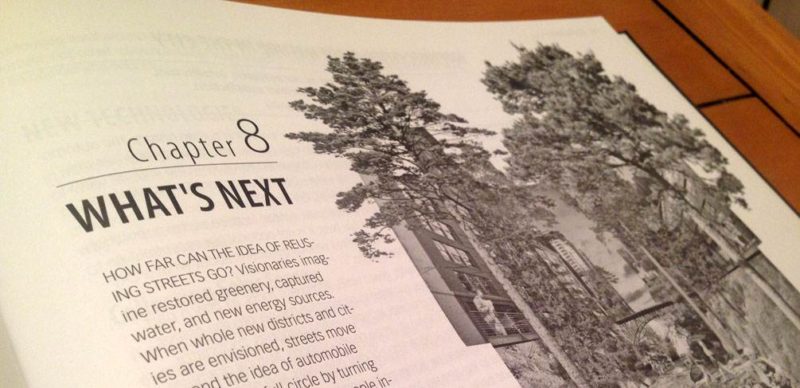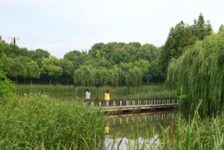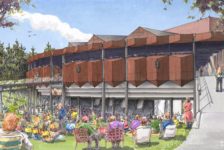A book review of Living Streets: Strategies for Crafting Public Space, by Lesley Bain, et al. The book “Living Streets: Strategies for Crafting Public Space” addresses themes in urban streets and the public realm. Specifically described in the book are both past and present trends in streetscape design, as well as evaluations of their effectiveness through case studies and first-hand research. Other issues addressed include the clash between designing for vehicles and designing for the pedestrian experience and the conflict between aesthetic and functional design.
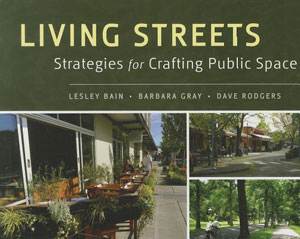
Front cover of Living Streets: Strategies for Crafting Public Space
Three of the eight chapters of the book address three ways to use a space in the public right-of-way: for mobility, for placemaking, and for natural systems. The rest of the chapters outline specific successful elements in creating public space, influences in the public right-of-way, typologies, case studies, and where the future of streetscape design is headed. The longest of these is Chapter Six, which includes nearly 100 pages of street classification geared toward helping designers recognize patterns and trends in typologies.
Living Streets: Strategies for Crafting Public Space
Who wrote, “Living Streets” and who is it written for? A team of authors including Lesley Bain, AIA; Barbara Gray; and Dave Rodgers, PE, wrote, “Living Streets”. This interdisciplinary team has a diverse background, including individuals formally trained as architects, urban designers, urban planners, engineers, and sustainable designers. Get it HERE!

Living Streets Strategies for Crafting Public Space. Photo credit: Rachel Kruse
This book is entirely applicable to those in the design professions, including urban planners, landscape architects, engineers, and architects, as well as government officials and policymakers. While it uses jargon specific to the design professions, the text includes examples and explanations to educate those who may be new to urban design principles.
How is it relevant to landscape architecture? Landscape architects deal with a wide range of projects, including healthcare, education, retail, and commercial design. No matter what the project is, landscape architects can use this book as a manual to identify ways in which projects can have a positive impact on the streetscape and contribute something of value to the public realm.
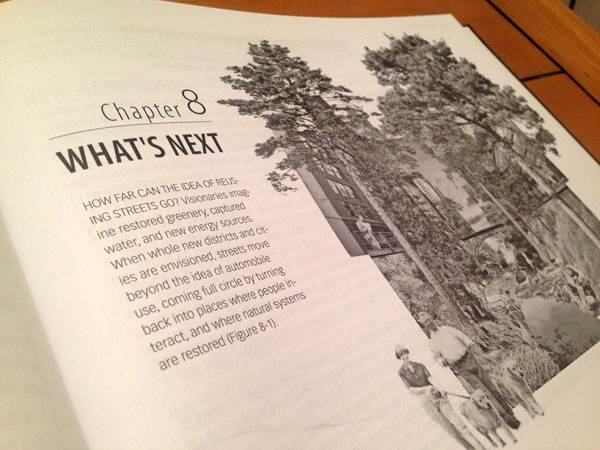
Inside Living Streets Strategies for Crafting Public Space. Photo credit: Rachel Kruse
Landscape architects also have a role as citizens in their communities to advocate to their neighborhood associations and local government officials to create living streets that meet the needs of all users and set an example for other towns and cities.
Why is this a worthwhile read? This book serves as quite a valuable resource to designers because it is filled with a wealth of information. The table of contents is clearly laid out and quickly identifies what readers should expect to find in each section. Additionally, there is a lengthy index in the back that includes terms and locations. This book could even serve as a good reference before traveling to a new city. I quickly looked up cities I had been to or those I live near to find sites I should visit, sketch, study and research.
Other book reviews you may be interested in:
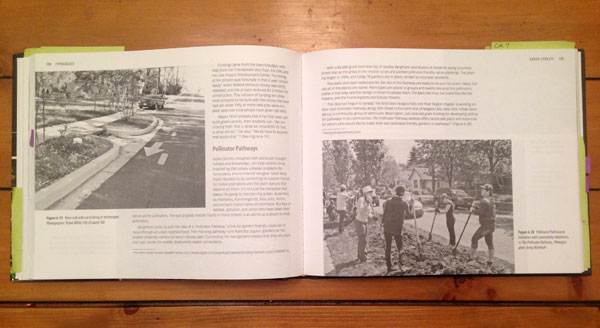
Inside Living Streets Strategies for Crafting Public Space. Photo credit: Rachel Kruse
Before meeting with a client or conducting a community meeting, this book could serve as an excellent presentation outline, as it provides not only ideas for designing the right of way, but also explains why they are successful techniques.
Highlight If I have to pick out just one page that caught my eye and attention the most during my initial skim through, it would be page 16 — “Reclaiming Right-of-Way: PARK(ing) Day.” Although I am familiar with parking day and I have participated in the event, I was excited to see that the authors took the time to explore such a trend, include photographs, and take the opportunity to educate others about the annual event.
Review by Rachel Kruse Return to Homepage
Published in Blog




